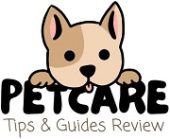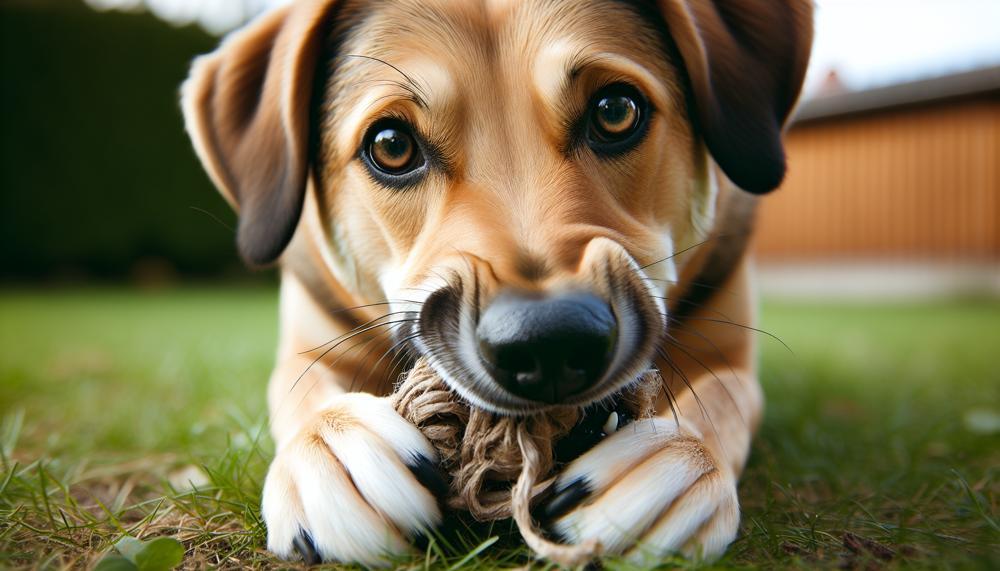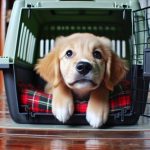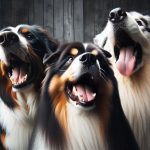As any dog owner knows, our furry friends are full of love and affection. And one way they express this is through nibbling on each other. But why do dogs do this? Is it just a playful behavior or is there a deeper meaning behind it? In this blog post, we’ll explore the fascinating world of doggie nibbles and uncover the reasons behind this common behavior.
From social bonding to grooming habits, there are many explanations for why dogs engage in nibbling with one another. It’s not just about playtime – there are instinctual drives and social cues at play as well. So let’s grab our pups and dig into the topic of why dogs nibble each other.
We’ll start by looking at the role of play in dog behavior and how it relates to nibbling. Then, we’ll delve into the natural instincts that drive dogs to nibble on each other, such as grooming and establishing hierarchy within their packs. We’ll also discuss the importance of proper training and boundaries when managing excessive nibbling behaviors.
So whether you’re a curious pet owner or just love learning about canine behavior, this blog post has something for everyone.
Get ready to explore the intriguing world of doggie nibbles with me as your guide. Let’s dive in.
Why Do Dogs Cob (Pibble Nibble)?
Table of Contents
Dogs have been known to cob or nibble on each other for various reasons. This can be seen as a natural behavior among our canine companions and can even strengthen their bond. But just like us, dogs also have their own distinct personalities and quirks that may cause them to cob excessively.
One of the main reasons why dogs cob is for play or affection. They may use gentle nibbles or mouthing as part of their interaction with other dogs or even their owners. This is perfectly normal and can be a way for them to show love and affection towards each other.
Another reason for cobbing is grooming. Dogs that are close to each other may groom each other by gently nibbling on their fur or skin. This can also be a way to remove any dirt or debris from their coat.
Communication is also another factor that can lead to cobbing. Dogs may use this behavior to convey a message to other dogs, such as showing submission or asserting dominance.
However, there are certain triggers that can cause excessive nibbling between dogs. These include curiosity, excitement, imitating learned behaviors, boredom, anxiety, and dominance. It’s important to monitor these behaviors and address them properly to ensure the safety of all dogs involved.
In some cases, aggressive behavior may also be a cause for excessive cobbing.
It’s crucial to train dogs on proper behavior and use techniques such as verbal cues and redirecting with chew toys to manage excessive nibbling.
What Does Dog Cobbing Mean?
Dog cobbing is when a dog gently nibbles using their front teeth, which is distinct from aggressive biting. This behavior can be a sign of affection, grooming, or communication between dogs and their owners.
It may also serve as a bonding activity and can be seen in puppies as a way to soothe teething discomfort. However, excessive nibbling can also be a result of stress or anxiety.
It’s crucial to understand the underlying reasons for this behavior and address it effectively to prevent any potential escalation into aggression.
| Causes of Cobbing | Possible Solutions |
| Cobbing as a bonding activity | Encourage gentle play and provide suitable chew toys. |
| Cobbing as a grooming gesture | Monitor and limit excessive nibbling during play sessions. |
| Cobbing during teething | Provide appropriate teething toys and monitor for potential aggression. |
| Cobbing due to stress or anxiety | Address potential stressors and seek professional help if necessary. |
| Potential escalation into aggression | Consistency in training and reinforcing boundaries is crucial. |
In summary, dog cobbing is a natural behavior that allows dogs to communicate, bond, and groom each other. However, excessive nibbling can also occur due to various factors such as stress and anxiety, which can potentially lead to aggression.
It is important for dog owners to understand the reasons behind cobbing and address it appropriately through proper training techniques and addressing any underlying issues.
Why Is My Dog Cobbing Me?
Dog nibbling, also known as cobbing, is a common behavior in dogs where they gently nibble using their front teeth. This behavior can have various meanings and can be interpreted differently depending on the situation.
Here are some possible reasons why your dog may nibble on you and what it could mean:
| Reason | Meaning |
| Intimacy | One of the most common reasons for dog nibbling is to show their love and affection towards their owners. This behavior mimics the way puppies play with their littermates and can be seen as a sign of bonding. |
| Attention-seeking | Dogs may also nibble to seek attention from their owners. This could be a way for them to initiate play or ask for food or other forms of interaction. |
| Relaxation | Nibbling can also be a self-soothing behavior for dogs, helping them to feel calm and secure. It serves as a coping mechanism for anxiety or stress. |
| Motherly instincts | Newborn puppies often nibble as they stimulate milk production from their mother. Similarly, adult dogs may exhibit this behavior towards their owners, expressing their maternal instincts. |
| Social interaction | When dogs nibble on each other, it can be a form of social interaction and grooming. This is commonly seen among dogs in the same household or during playdates. |
| Boredom or stress | If your dog is nibbling on objects such as blankets, toys, or even the cat, it could be a sign of boredom or stress. Providing mental and physical stimulation can help alleviate this behavior. |
| Skin irritations or pain | Sometimes, dogs may nibble on themselves due to skin irritations, allergies, parasites, or pain. If you notice excessive nibbling on a specific body part, it’s best to consult with a veterinarian. |
| Excessive nibbling | Nibbling can become excessive if it is used to relieve anxiety or pain and may lead to destructive habits or skin infections. It’s crucial to address any underlying issues and redirect this behavior towards more appropriate outlets. |
So, dog nibbling is considered a normal behavior and often signifies love and affection towards their owners. However, it’s essential for dog owners to monitor this behavior and address any underlying issues to maintain a healthy relationship with their furry companions.
What Does Cobbing Mean For Dogs?
Cobbing behavior in dogs can have a beneficial effect on their relationships with other canines. It is often used as a way to express affection and establish friendships between dogs.
Cobbing can act as a means of communication between dogs, allowing them to gather information about their surroundings through pheromones detected by their specialized organ called Jacobson’s organ.
However, excessive or aggressive cobbing can lead to tension and disrupt the harmony among dogs. Therefore, it is crucial for dog owners to closely monitor their dog’s cobbing behavior and intervene if necessary to prevent potential conflicts.
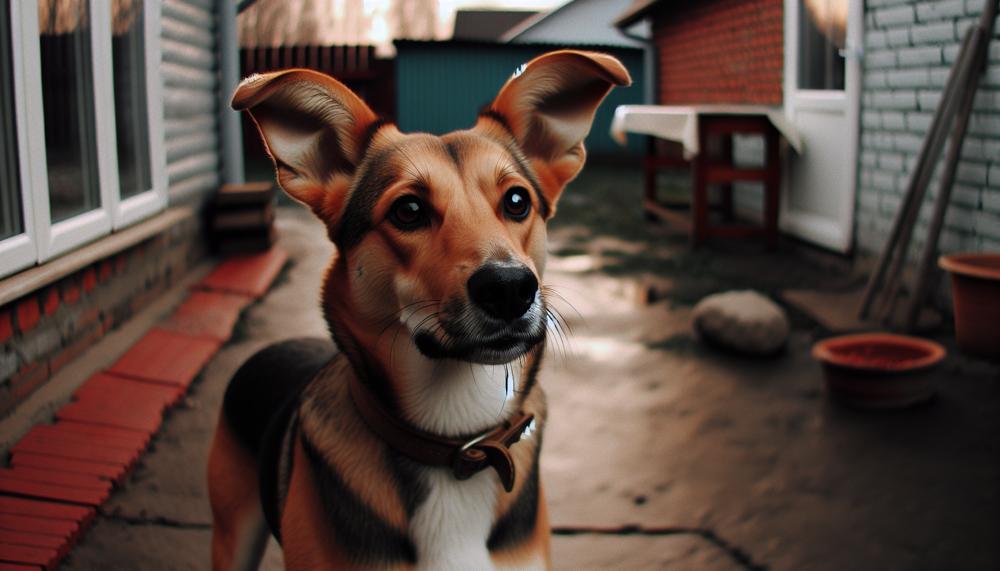
Furthermore, if a dog constantly exhibits cobbing behavior towards other dogs or objects, it may be a sign of underlying issues such as anxiety or teething discomfort.
In such cases, it is important for dog owners to address the root cause of the behavior through proper training techniques and providing suitable outlets for their dog’s energy.
When Is Dog Cobbing A Problem?
Dog nibbling, also known as cobbing, is a typical behavior in dogs. However, it can become an issue if it becomes excessive or aggressive. Below are signs that indicate when dog nibbling or cobbing may be problematic and require attention:
- Excessive or aggressive behavior: When your dog constantly nibbles on objects, people, or other animals in a rough or aggressive manner, it is a sign that the behavior needs to be addressed. This can lead to harm to themselves or others and cause tension and fights between dogs.
- Signs of stress or anxiety: Dogs may also nibble excessively when they are feeling stressed or anxious. This can be a sign that they are experiencing separation anxiety or other forms of stress, and nibbling is their way of coping with these emotions.
- Dental problems: Excessive nibbling on hard objects can also lead to dental issues in dogs. It can cause wear and tear on their teeth, resulting in chipped or broken teeth and even gum disease.
- Other behavioral issues: Excessive nibbling may also indicate other underlying behavioral problems that need attention. This can include boredom, teething pain, or a lack of appropriate chew toys.
To address the issue of dog nibbling or cobbing, intervention and training are crucial. Positive reinforcement techniques, such as rewarding good behavior and redirecting negative behavior, can effectively address the problem. Additionally, establishing yourself as the pack leader and providing appropriate chew toys can help curb the behavior.
It is also important to understand the reasons behind dog nibbling. Affectionate bonding, excitement, boredom, and teething pain are some common reasons why dogs may nibble. By understanding these reasons, you can better address the behavior and provide alternative outlets for your dog’s needs.
Lastly, it’s essential to note that dog nibbling on blankets or each other is normal behavior and a way for them to show affection and communicate.
Also Read: Why Does My Dog Howl When I Howl?
Conclusion
In conclusion, the act of dog nibbling, also known as “cobbing,” is a natural and multifaceted behavior that serves many purposes.
Whether it’s during playtime or as a form of affection, grooming, or communication, dogs use nibbling to establish and strengthen their bonds with each other. However, excessive or aggressive nibbling can be a cause for concern and may indicate underlying issues such as stress or dental problems.
By doing so, we can ensure a harmonious and fulfilling relationship with our canine companions.
